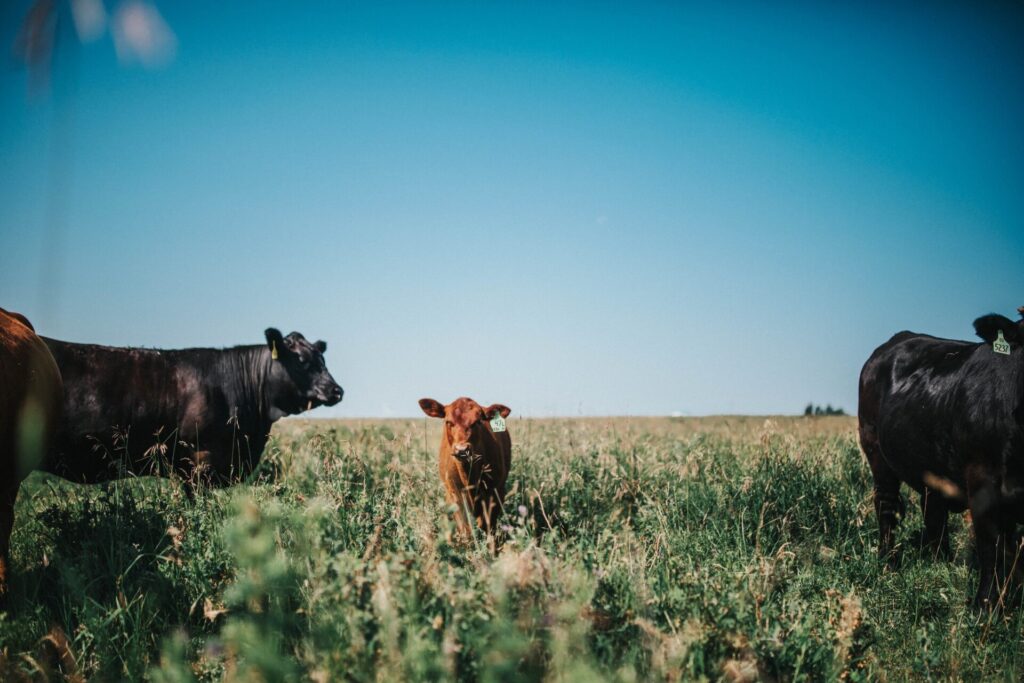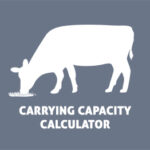AB Direct - Steers
Rail: 495.75-501.50 FOB feedlot (last week)
AB Direct - Heifers
Rail: 495.75-501.50 FOB feedlot (last week)
US Trade- Steers
Rail: 365.00-368.00 (NE, IA) last week
US Trade - Heifers
Rail: 365.00-368.00 (NE, IA) last week
Canadian Dollar
0.27

When do I turn out my cows? Managing spring pastures during and after drought
This article was originally posted on the Beef Cattle Research Council’s website on February 28, 2024.
Beef producers will soon be making grazing plans for turning their herds out to spring pastures.
While drought planning should be a routine part of the development of short- and long-term grazing plans, many beef cattle herds have withstood successive years of drought. This has prompted producers to hone in on their management skills to make the best use of their pasture forage and carefully maintain carryover to prevent prolonged damage. The question of ‘when can I turn my cows out?’ is an important one, especially for those with dwindling hays stacks or for producers purchasing feed.
Dr. Edward Bork is a Professor of Rangeland Management in the faculty of Agricultural, Life, and Environmental Sciences at the University of Alberta. He says that, aside from spring rainfall, how your pastures looked when you brought cattle in last fall may be the best indicator of how they will perform in spring. “The better condition the pasture was in October, the faster it will recover,” Bork explains.
Reducing the long-term impact of drought
With high winter feed costs, it may be tempting for producers to place cattle in pastures sooner than they normally would, but Bork cautions to be aware of potential long-term consequences. He points out that when we stress forages, we not only affect the above-ground growth but the below-ground root system as well.
“Deep roots require the most energy to maintain so they are the first to go,” says Bork, which means that when those roots are not maintained, the plant can lose its ability to draw from deep soil moisture reserves. Those deep roots store energy to keep the plant active during a drought and are also important for long-term survival. Native and tame plants have different root systems. In some cases, native plants appear to bounce back from drought quicker, because as long as they are healthy, they have much deeper roots than many tame species, Bork explains.
As enticing as it may be to turn cattle out early, or in some cases even just at a “normal” time, producers should consider holding off if their pastures have been stressed recently. “By managing pastures cautiously in the short term, we can prevent having to deal with drought-related issues for the next 10 years,” says Bork. Avoiding long-term damage to plant health and root systems will help prevent erosion and even reduce a pasture’s risk for weed encroachment.
“When do I turn my cows out in the spring?”
Bork shares some tips for knowing when to turn cattle out, and how to make decisions that will support and maintain the long-term productivity of your pastures:
- Know your carrying capacity: Be realistic with the amount of forage you have and develop your grazing plan accordingly. Use regional range health guidelines or the BCRC’s Carrying Capacity Calculator to estimate the amount of forage available and how many animals a pasture can support.
- Wait until the three-leaf stage: Using plant height is not a good way to determine readiness to graze as plants can vary greatly by height, especially in the early stages. Instead wait until plants have three leaves to start grazing. This gives the plant time to build the reserves it needs for long-term survival. A common grazing rule of thumb is that for every one day you wait to graze in the spring you save two days in the fall.
- Match your grazing plan to your pasture type: If possible, graze tame pastures prior to native pastures. Tame pastures are generally more grazing tolerant, and may be quicker to green up in spring, providing valuable early grazing. In contrast, native grasslands often take longer to reach peak production and therefore should be deferred longer if that is an option.

- Pay attention to litter: Litter is the standing or fallen dead plant residue left remaining in a pasture. Bork points out that litter serves multiple purposes on prairie landscapes by conserving rain and snow melt but can also be part of the forage reserve. Pastures with abundant litter will require less recovery and can be accessed earlier in the season than those where there is little or no litter remaining. Grasslands without litter may produce 25-60 per cent less forage than grasslands with adequate litter, says Bork. Pastures with reduced litter lose moisture through evaporation and runoff and are at a higher risk of sun and wind exposure.
- Look backward: how was your forage managed in the previous year? If certain pastures were left in poor condition last fall, plan to use those in the following grazing season to allow ample time for rest and recovery.
- Use rainfall rather than snow as your indicator of moisture recharge: Although looking at the plants and pastures should be your first indicator for forage growth potential, many beef producers may look to soil moisture levels to help determine pasture turnout. Bork points out that while snow can contribute to moisture recharge, this is not a certainty and may have a limited effect on forage recovery due to its tendency to evaporate (with chinooks, for example), or run off if soils are frozen. “Up to seventy percent of our precipitation on the prairies comes from rainfall in the growing season as opposed to snow, meaning that each year our forage growth is closely tied to the occurrence of May and June rainfall.” Bork is quick to note that when soil moisture is severely depleted by drought the prior year, spring growth will be even more dependent on timely rainfall.
- Be ready to adapt: Recognize that grazing plans made in early spring are a moving target and will need to be adjusted based on rainfall, heat, and other environmental factors. Monitor pastures throughout the grazing season and consider what potential back-up plans might need to be implemented to ensure pastures are managed for drought resilience.
“If the pasture isn’t ready, what do I do?”
If producers are faced with drought conditions again, pastures will benefit from extended recovery time. It might be necessary to implement some early steps to prevent long-term damage to pastures.
- Consider alternative feeds: Are there alternative feeds or byproducts such as soybean hulls, beet pulp, pellets, screenings, or other feed sources that can be used to extend the winter-feeding season or as supplements on pasture? Read this article on utilizing byproducts for more information.
- Annual forages may fill the gap: Annual forages can be grazed four to six weeks after seeding and can often be stocked heavily. This strategy may help to alleviate pressure on grasslands, thereby allowing them to reach their peak growth potential which can help get your grazing plan back on track.

- Determine if destocking is necessary: Making the decision to cull is never an easy one but it can help to reduce reliance on stressed pastures and aid in faster recovery. This article shares tips for making decisions on which cattle to cull.
- Shorten the breeding season: By shortening your breeding season and pulling bulls sooner you are selecting for cattle that rebreed earlier, tightening up your calving season, and may be able to take advantage of higher grasser market prices for open heifers. This can help with culling decisions. This recent webinar shares additional information on shortening the breeding season for heifers.
Managing grasslands through drought is not an easy task, but having a plan going in, monitoring pastures and being willing to adapt as the weather changes can prevent pasture decline. Facing pasture productivity challenges head-on can help producers be better poised for recovery and reap the rewards when moisture is abundant.



